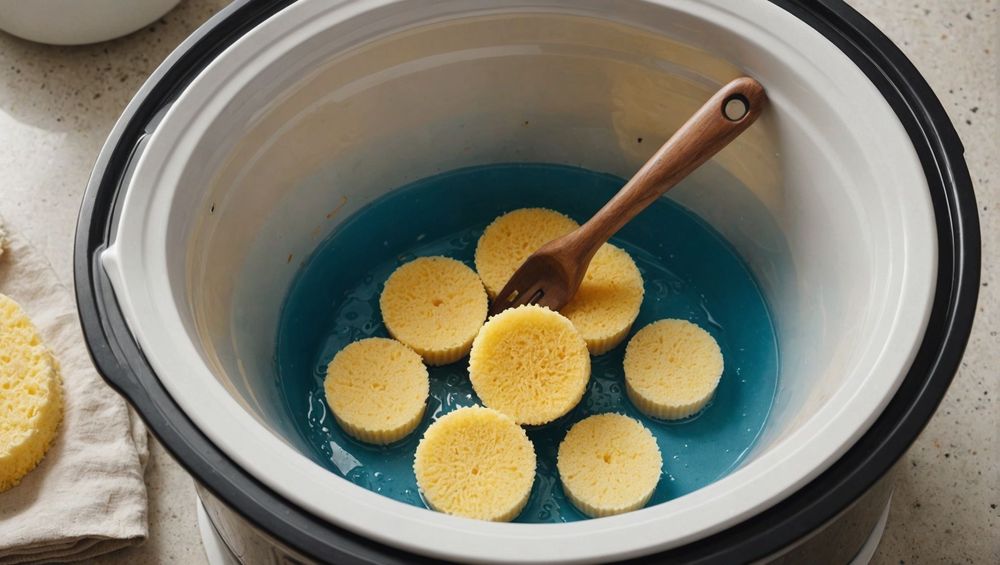How to Clean a Slow Cooker, Including Tough Stuck-on Stains
Cleaning a slow cooker can be a daunting task, especially when it comes to tough, stuck-on stains. Fortunately, with the right techniques and tools, you can make your slow cooker gleam like new. This article will guide you through effective cleaning methods, addressing both routine maintenance and tackling stubborn residue seamlessly. From soaking to scrubbing, transform your slow cooker clean-up into a hassle-free experience. Let’s delve into various strategies to ensure your slow cooker remains in top-notch condition!
Understanding Your Slow Cooker

Before diving into the cleaning process, it’s essential to understand the components of your slow cooker. Most slow cookers consist of three main parts: the outer housing, the removable ceramic insert, and the lid. The removable insert is where all the cooking happens, making it the primary focus during cleaning. Knowing these parts helps you clean effectively without damaging any components.
Many slow cooker inserts are dishwasher safe, adding convenience to the cleanup process. However, if your slow cooker lacks a dishwasher-safe insert, don’t fret! There are several effective hand-cleaning techniques you can utilize. Always consult the manufacturer’s recommendations regarding which parts are safe for specific cleaning methods.
Basic Cleaning Steps

For routine cleaning, follow these straightforward steps that will keep your slow cooker in excellent condition.
- Unplug and Cool Down: Ensure the slow cooker is unplugged and completely cooled before starting the cleaning process to avoid burns or electrical hazards.
- Remove the Insert and Lid: Detach the removable ceramic insert and the lid from the body of the slow cooker.
- Soak and Scrub: Fill the insert with warm, soapy water and allow it to soak for about 15-30 minutes. This will help loosen any food residue.
- Wipe Down the Housing: Use a damp cloth to clean the exterior housing of the slow cooker. Avoid using excessive water, especially around the electrical components.
- Rinse and Dry: After soaking, scrub the insert and lid using a soft sponge or cloth. Rinse thoroughly to remove soap residue and dry them completely before reassembling.
By following these steps, the majority of food residue should come off without much effort. Remember, regular cleaning after each use can help minimize tough stains from forming, making the cleaning process significantly easier!
Tackling Tough Stuck-on Stains
Sometimes, remnants of delicious meals stubbornly cling to the ceramic insert, requiring a bit of extra effort to clean. Here are some effective techniques to remove those tough stains:
- Baking Soda Paste: Create a paste by mixing baking soda with a little water. Apply this paste on the stained areas and let it sit for at least 15 minutes before scrubbing with a sponge.
- Vinegar Soak: Fill the insert with equal parts water and white vinegar, and let it soak for 30 minutes. The acidity in vinegar helps break down stubborn residues.
- Dishwasher Detergent Method: Sprinkle a few tablespoons of dishwasher detergent in the insert and add hot water. Leave it to soak for a few hours to significantly loosen stuck-on food.
- Steel Wool or Scouring Pad: For extremely tough stains, gently use a non-abrasive scouring pad or steel wool, but proceed with caution to avoid scratching the surface.
When using any chemical cleaners, it’s vital to rinse thoroughly to ensure no residue remains, which could potentially contaminate future meals.
Tips to Prevent Stains
While cleaning is essential, preventing tough stains saves you time and effort. Here are some efficient tips to consider:
- Use Liners: Slow cooker liners can prevent food from sticking to the insert, making cleanup significantly easier.
- Oil or Spray Cooking Spray: Lightly greasing the insert before adding ingredients acts as a protective barrier against sticking.
- Rinse Promptly: After the slow cooker has cooled, rinse and soak it as soon as possible to prevent food from hardening.
- Avoid High Sugar Foods: Be aware that cooking high-sugar meals can contribute to harder-to-clean residues, so adjust your recipes accordingly.
Conclusion
Cleaning a slow cooker doesn’t have to be a challenging or unpleasant task. With these strategies in place, you can effectively combat tough stains and maintain a clean cooking environment. Remember, regular maintenance combined with preventive measures will prolong the life of your slow cooker and keep it looking its best. Embrace these cleaning tips, and you’ll turn what once was a dreaded chore into a simple routine!
FAQ
1. Can I put my slow cooker insert in the dishwasher?
Most ceramic slow cooker inserts are dishwasher safe. However, always verify with your manufacturer’s instructions to ensure compatibility.
2. How do I remove burnt-on food from my slow cooker?
To remove burnt-on food, soak the insert in a mixture of vinegar and water, or create a baking soda paste for effective scrubbing. A dishwasher detergent soak can also help.
3. Is it safe to use steel wool on my slow cooker insert?
It is generally not advisable to use steel wool as it can scratch the ceramic finish. Instead, opt for non-abrasive scouring pads for cleaning.
4. How often should I clean my slow cooker?
It’s best to clean your slow cooker after each use to prevent food residue from hardening and creating tough stains. Regular cleaning will maintain the efficiency of the appliance.
5. What should I do if I can’t remove all the stains?
If stains persist even after cleaning efforts, consider consultating the manufacturer for specific cleaning tips or try using a specialized cleaner meant for cookware.
